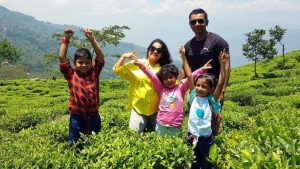Are you a woman planning a solo trip to an Indian destination? Then it’s essential to know the list of the safest cities in India for women and also the places that are best to avoid. The NARI 2025 report highlights the top cities in India where women can travel with confidence, as well as those that pose higher safety risks. Whether you are traveling solo, as a couple, or with family, being aware of these insights can help you plan a stress-free journey.
In this article, we’ll discuss both the safest and least safe cities in India for women travelers, along with reasons why avoiding the unsafe ones is important. Thereby, we’ll explore the safest cities in detail—covering the best attractions, things to do, how to reach, and the ideal time to visit. This way, you can make the most of your trip and enjoy a memorable holiday, knowing you’ve chosen destinations that prioritize safety and comfort.
Related: Ranchi – A Refreshing Travel Destination
Table of Contents
NARI 2025 Report: What It Reveals
The National Annual Report & Index (NARI) 2025 offers a comprehensive picture of women’s safety across India. According to the report, around 60% of women in urban India feel safe, but a concerning 40% still do not. The index goes beyond crime numbers; it measures perceptions of safety, harassment in public places, effectiveness of institutions, and trust in local systems.
From this survey of 31 Indian cities:
- Kohima emerged as the safest city for women with a safety score of 82.9%.
- Major metro hubs like Mumbai, Hyderabad, and Bengaluru also secured their place in the top 10.
- On the other hand, cities like Patna, Jaipur, Kolkata, Delhi, and Dehradun fell well below the national average of 65%.
This data is vital for travelers, especially women and families, to plan holidays with confidence and awareness.
Interesting Post: Best Places to Visit in Ladakh + Itinerary
Safest Cities in India for Women (NARI 2025 Rankings)
Here is the list of the Top 10 Safest Cities in India for Women:
| Kohima (82.9%) | Strong gender equity, active community policing, neighborhood watch systems, and civic engagement support a secure atmosphere for women. |
| Visakhapatnam (72.7%) | Excellent infrastructure, proactive policing, and accessible public transport contribute to the safety perception. |
| Bhubaneswar (70.9%) | Inclusive urban planning, responsive institutions, street lights, and women-friendly programs boost safety. |
| Aizawl (70.6%) | High social trust, strong urban culture, and visible police presence keep women secure, even at night. |
| Gangtok (70.4%) | Community support, prompt institutional response, and gender-sensitive social norms form a welcoming safety net. |
| Itanagar (70.4%) | Inclusive local governance and active women’s collectives foster a safe environment. |
| Mumbai (70.2%) | Despite being a megacity, proactive policing, reliable public transport, civic participation, and POSH policies in workplaces contribute to safety |
| Hyderabad (69.9%) | Strong police surveillance, technology-driven monitoring systems, and a community-oriented culture that ensures women feel secure. |
| Bengaluru (69.7%) | Backed by strong civic administration and well-connected public spaces, making it a reliable and safe choice for women travelers. |
| Ahmedabad (67.0%) | Police patrolling and community support enhance safety. |
These cities are above the national safety benchmark, offering women and families a much more secure environment compared to other parts of India.
Sources: The Econ Time, etc.
Travel Insights: Exploring the Safest Cities in India for Women
1. Kohima, Nagaland – Ranked Safest in India
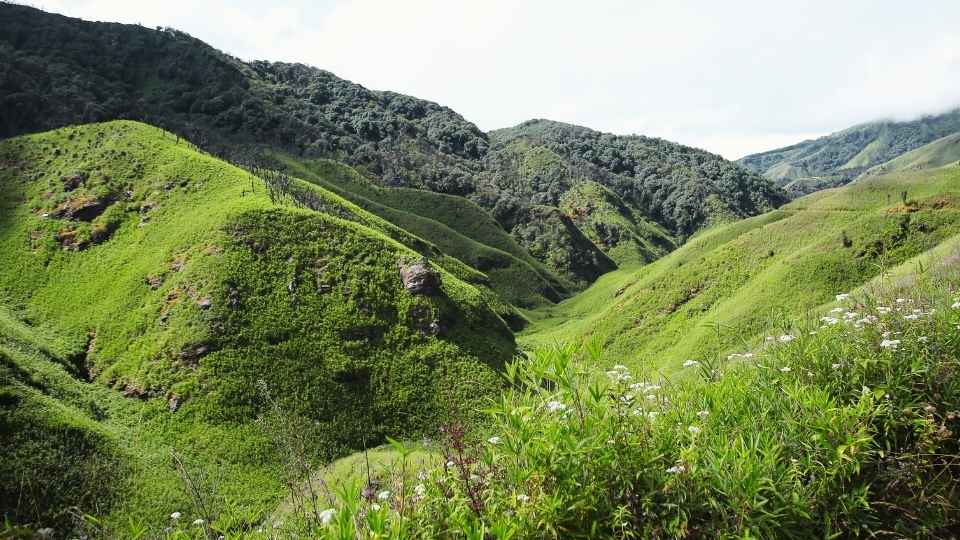
Although Kohima is noted as the safest city in India for women, the entire state (Nagaland) is NOT safe for solo women travelers, especially in the remote areas. You can plan to explore Nagaland’s rich tribal traditions and scenic beauty, but must visit in a group. Note: Inner line permits are needed to enter and stay in Nagaland.
- Top Attractions in and around Kohima: Kisama Heritage Village (Hornbill Festival), Kohima War Cemetery, Khonoma Green Village, Dzükou Valley trek.
- Other Nearby Trips (within 200 km): Mokokchung (Nagaland’s cultural hub), Dimapur (Nagaland Zoological Park, 13th-century Kachari ruins), Dzulekie village for eco-tourism, and Tuophema tourist village.
- How to Reach:
- By Air: Nearest airport Dimapur (70 km), daily flights from Kolkata, Delhi, and Guwahati.
- By Train: Dimapur railway station connects to Guwahati, Dibrugarh, and Kolkata. From Dimapur, Kohima is a 2-hour drive.
- Ideal Time to Visit: October to February (winter brings clear skies and the Hornbill Festival in December).
Also read about: Laitlum Canyon in Meghalaya
2. Visakhapatnam (Vizag), Andhra Pradesh
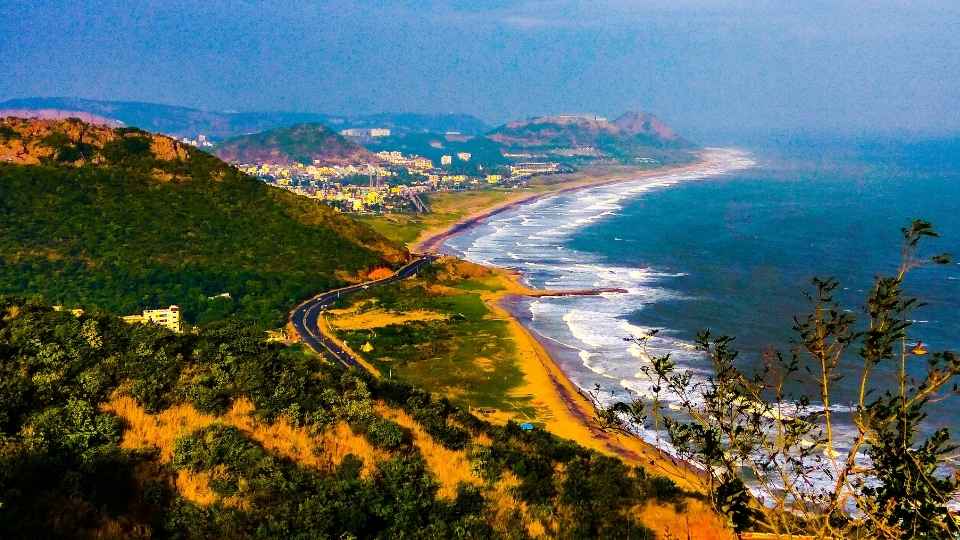
A safe coastal city offering beaches, valleys, and spiritual getaways.
- Top Attractions in and around Vizag: Rishikonda Beach, RK Beach, Kailasagiri Hill & park, INS Kursura Submarine Museum, Borra Caves, Araku Valley.
- Nearby Trips: Simhachalam Temple (20 km), Lambasingi (nicknamed “Andhra Kashmir,” 100 km), Kakinada (160 km), and Coringa Wildlife Sanctuary (170 km).
- How to Reach:
- By Air: Visakhapatnam International Airport connects to Delhi, Mumbai, Bengaluru, and Kolkata.
- By Train: Visakhapatnam Railway Station is a major junction on the Howrah–Chennai main line. Duvvada is an alternative station 10 km away from Visaakhapatnam.
- Ideal Time to Visit: October to February for beach weather and cool hill escapes.
Best for you: 19 best things to do in Pondicherry
3. Bhubaneswar, Odisha
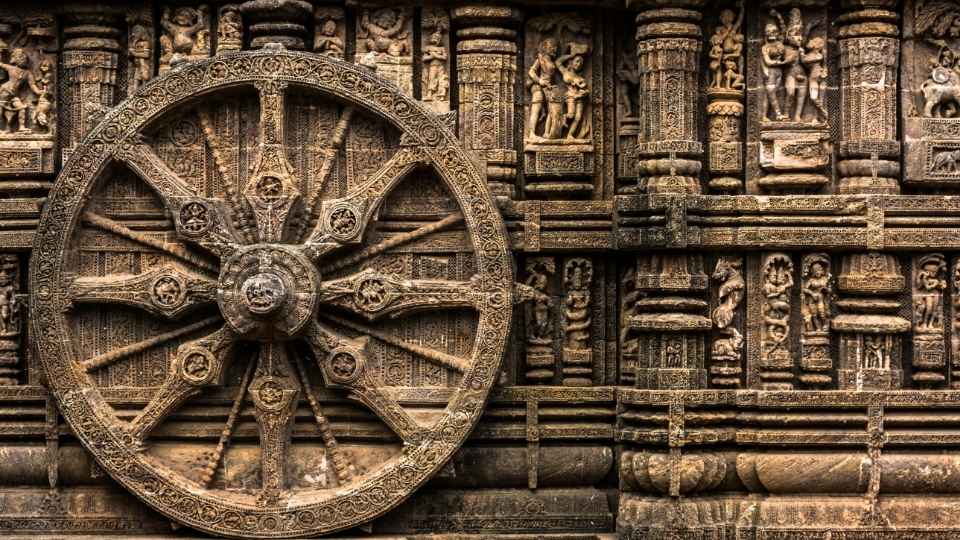
One of India’s cultural capitals, Bhubaneswar is both safe and spiritually significant.
- Top Attractions in Bhubaneswar: Lingaraj Temple, Mukteswar Temple, Khandagiri and Udayagiri Caves, Odisha State Museum.
- Nearby Trips: Puri (Jagannath Temple, 60 km), Chilika Lake (Asia’s largest brackish lagoon , 110 km). Konark Sun Temple (UNESCO World Heritage, 65 km), Dhauli Shanti Stupa.
- How to Reach:
- By Air: Biju Patnaik International Airport connects to Delhi, Mumbai, Bengaluru, and Hyderabad.
- By Train: Bhubaneswar Railway Station is well linked with Howrah, Chennai, and New Delhi.
- Ideal Time to Visit: October to March, when weather is mild and festive season is in full swing.
You may like: All about Mousuni Island
4. Aizawl, Mizoram
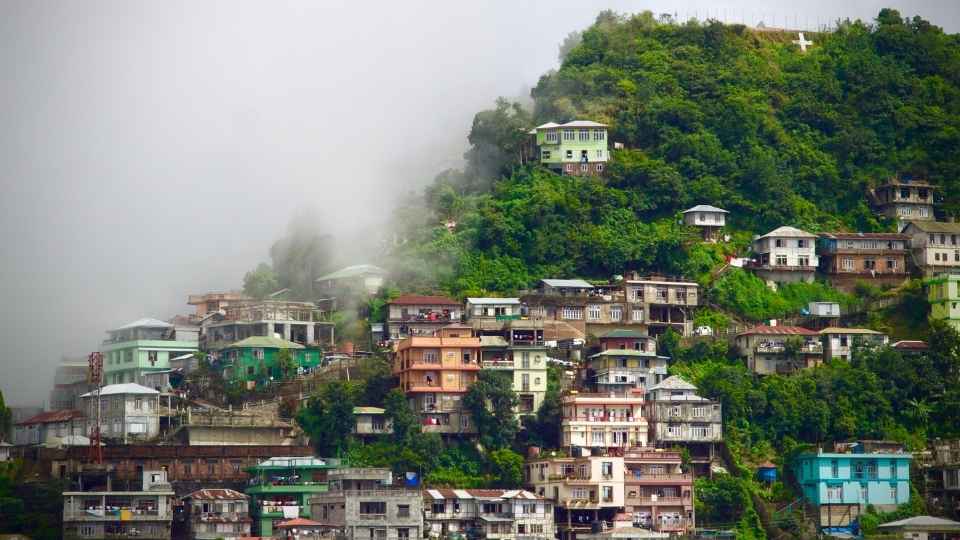
Peaceful and community-driven, Aizawl is one of India’s least explored hill capitals.
However, although Aizawl is announced as one of the safest cities in India for women, Mizoram is still not an ideal place for solo women travelers or single family. You may plan a group tour to explore the state’s culture and natural beauty.
Note: Inner line permits are needed to enter and stay in Nagaland. Also, language barriers and different food cultures are tough things to handle here.
- Top Attractions in Aizawl: Durtlang Hills, Mizoram State Museum, Bara Bazar, Solomon’s Temple.
- Nearby Trips: Reiek Tlang peak (30 km), Tamdil Lake (92 km), Hmuifang (50 km). and Serchhip waterfalls.
- How to Reach:
- By Air: Lengpui Airport (32 km) connects to Guwahati, Kolkata, and Imphal.
- By Train: The nearest major station is Silchar (180 km, Assam). From there, taxis and buses run to Aizawl.
- Ideal Time to Visit: October to May, with cool weather and dry roads. Avoid monsoon (June–September).
5. Gangtok, Sikkim
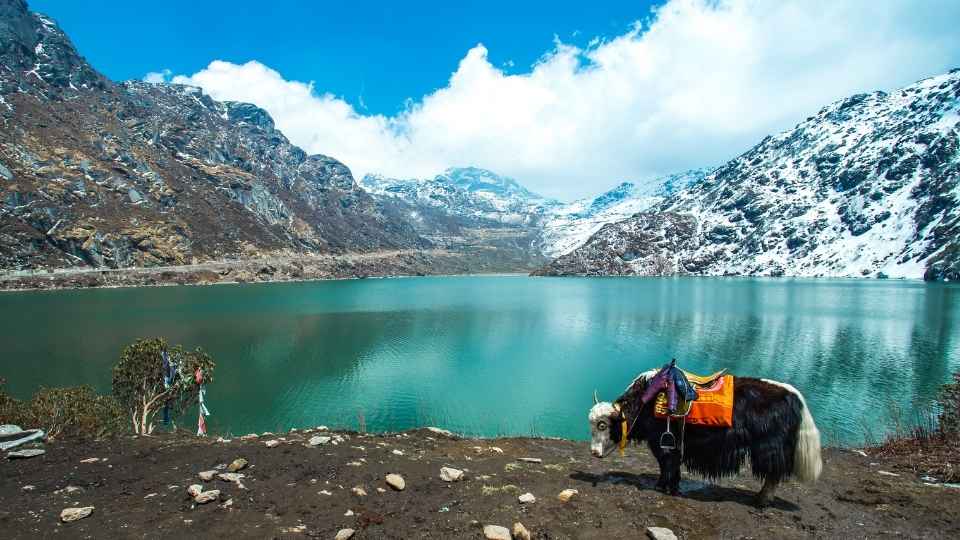
A tourist-friendly city, Gangtok blends natural beauty with vibrant culture.
- Top Attractions in Gangtok: MG Marg, Rumtek Monastery, Tsomgo Lake, Hanuman Tok, Nathula Pass (Indo-China border).
- Nearby Trips: North Sikkim (Singhik, Yumthang Valley, Gurudongmar Lake), West Sikkim (Pelling, Kaluk, Rinchenpong), South Sikkim (Namchi and Ravangla), East Sikkim (Zulukh, Kupup, Old Baba Mandir). Darjeeling, Tinchuley, Kalimpong, Lava, Rishyap, and Kurseong in West Bengal are also within 100 km.
- How to Reach:
- By Air: Pakyong Airport (31 km) with limited flights; Bagdogra Airport (125 km) is the main hub.
- By Train: New Jalpaiguri (NJP) is the nearest major station, around 120 km from Gangtok.
- Ideal Time to Visit: March–June (spring blooms) and September–December (clear skies and snow).
6. Itanagar, Arunachal Pradesh
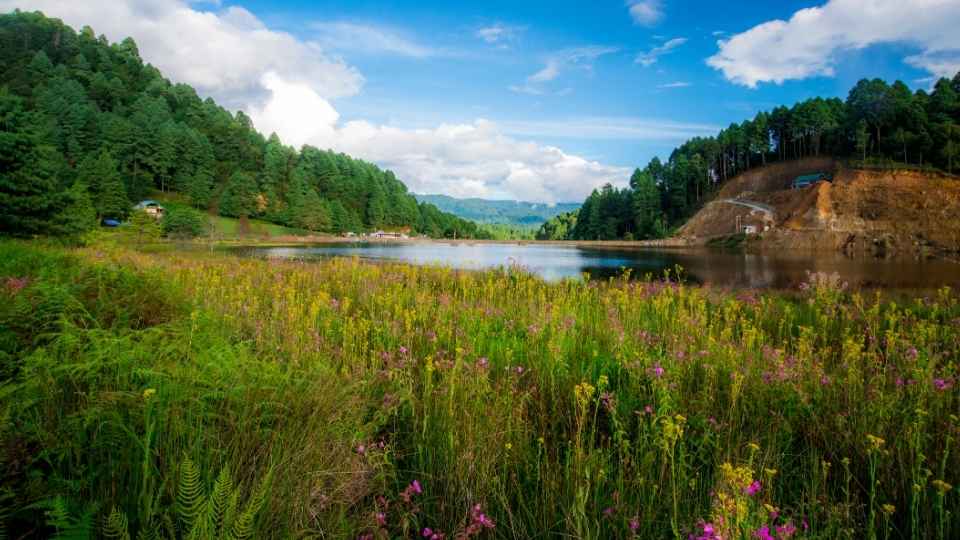
Safe, scenic, and culturally vibrant, Itanagar offers both heritage and nature. However, it’s strongly suggested to plan group-tour in isolated areas like Ziro Valley, etc.
- Top Attractions in Itanagar: Ita Fort, Ganga Lake, Jawaharlal Nehru State Museum, Buddhist Gompas.
- Nearby Trips: Ziro Valley (UNESCO heritage candidate, 110 km), Naharlagun town, Namdapha National Park (within 200 km via road trip), Pasighat (150 km), and Bhalukpong (gateway to Arunachal).
- How to Reach:
- By Air: Donyi Polo Airport (20 km) connects to Kolkata and Guwahati. Lilabari Airport (67 km, Assam) is also nearby.
- By Train: Naharlagun Railway Station (15 km) and Harmuti Railway Station (33 km) connects to Guwahati and Delhi.
- Ideal Time to Visit: November to March (dry, cool, ideal for outdoor exploration).
7. Mumbai, Maharashtra
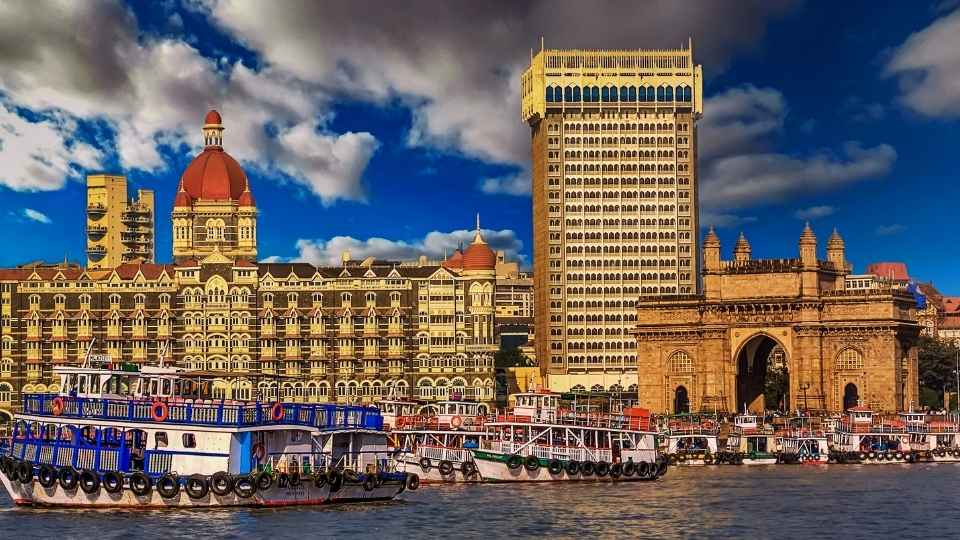
India’s financial capital also offers some of the best urban safety for women.
- Top Attractions in Mumbai: Gateway of India, Marine Drive, Chhatrapati Shivaji Terminus, Elephanta Caves, Juhu Beach, Siddhivinayak Temple, Sanjay Gandhi National Park.
- Nearby Trips: Lonavala & Khandala (hill stations – 83 km), Alibaug (beach – 95 km), Matheran (eco hill town), Nashik (wine tourism hub – 165 km). Mumbai is also he gateway of Goa.
- How to Reach:
- By Air: Chhatrapati Shivaji Maharaj International Airport connects globally.
- By Train: Mumbai CST, Dadar, and Lokmanya Tilak are major junctions with trains from across India.
- Ideal Time to Visit: November to February (dry and pleasant). Avoid monsoon (June–September).
8. Hyderabad, Telangana
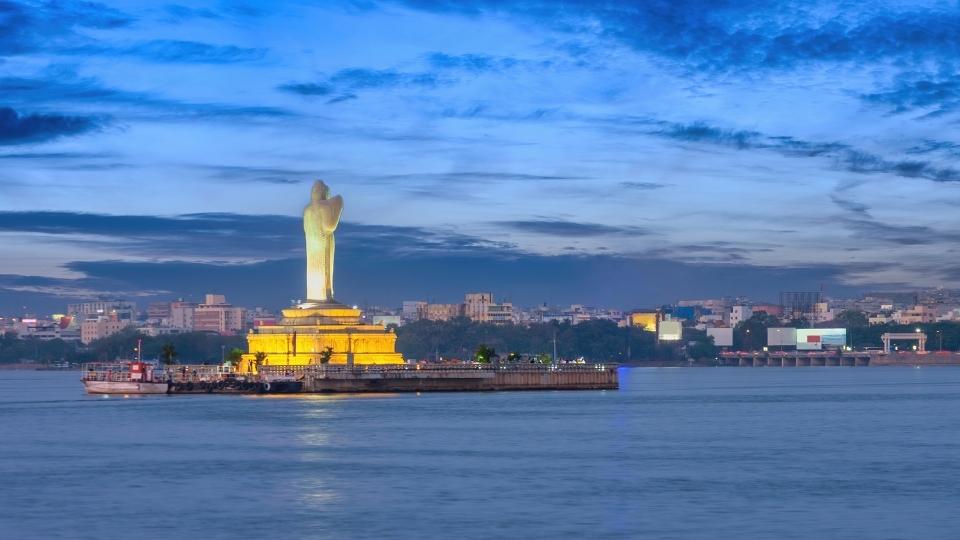
Hyderabad’s strong governance and tourism infrastructure make it both safe and exciting.
- Top Attractions in Hyderabad: Charminar, Golconda Fort, Ramoji Film City, Chowmahalla Palace, Hussain Sagar Lake.
- Nearby Trips: Nagarjuna Sagar Dam (150 km), Warangal (148 km, with Warangal Fort & Thousand Pillar Kakatiya Temple – UNESCO heritage), Bidar (145 km, Karnataka), and and Nalgonda caves.
- How to Reach:
- By Air: Rajiv Gandhi International Airport connects globally.
- By Train: Secunderabad, Hyderabad Deccan (Nampally), and Kacheguda stations are major railway hubs.
- Ideal Time to Visit: October to March (cool and comfortable for sightseeing).
9. Bengaluru, Karnataka
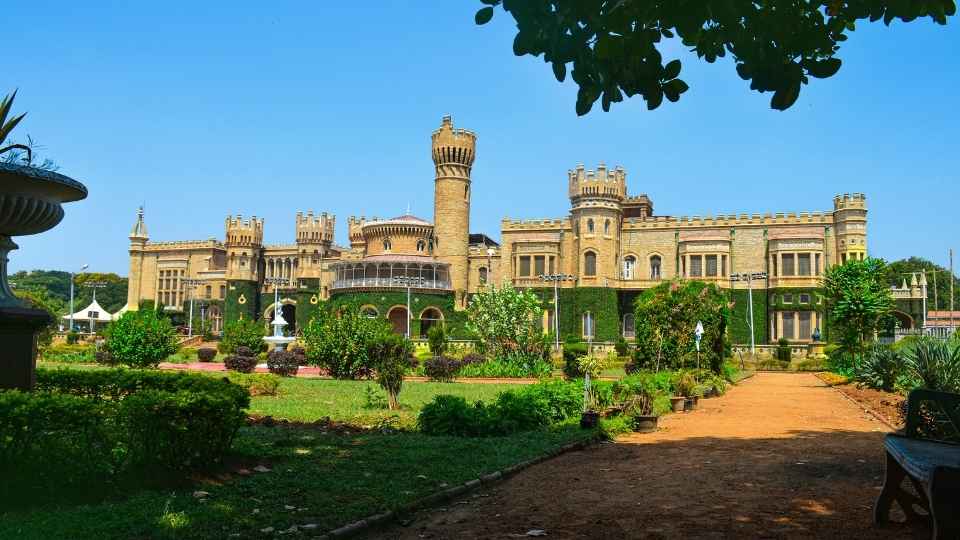
A youthful, cosmopolitan city with year-round pleasant weather and safe public spaces.
- Top Attractions in Bengaluru: Lalbagh Botanical Garden, Cubbon Park, Bangalore Palace, Bannerghatta Biological Park.
- Nearby Trips: Mysuru (145 km), Nandi Hills (60 km), Hogenakkal Falls (125 km), and Shivanasamudra Falls (135 km), Shravanabelagola, and Channapatna (toy town). This is also the gateway to Ooty and Coonoor.
- How to Reach:
- By Air: Kempegowda International Airport connects to all major Indian and global cities.
- By Train: Bengaluru City Junction, Yeshwantpur, and KR Puram connect to Chennai, Delhi, Kolkata, Hyderabad, and Mumbai.
- Ideal Time to Visit: Year-round (pleasant climate), but October–March is best for outdoor travel.
10. Ahmedabad, Gujarat
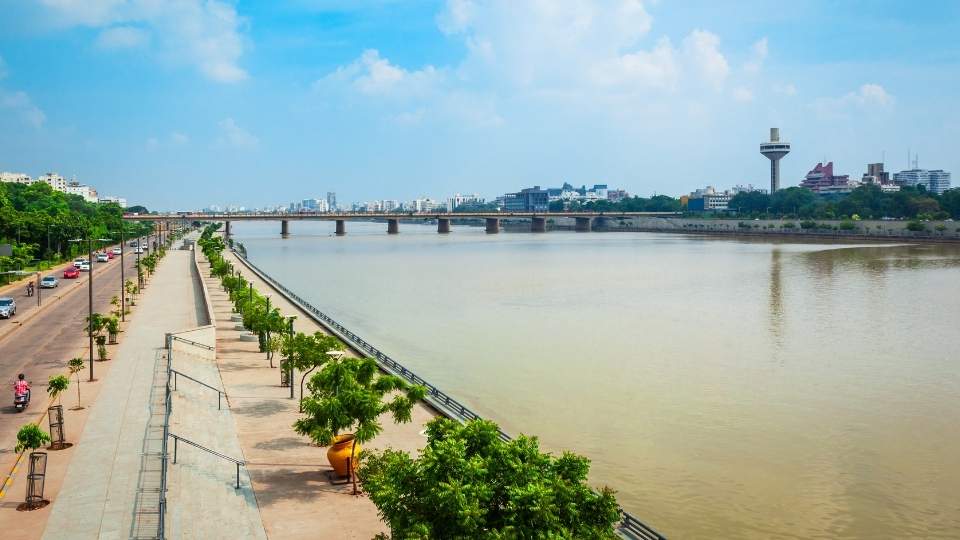
A UNESCO-listed heritage city, Ahmedabad blends safety with cultural depth.
- Top Attractions in Ahmedabad: Sabarmati Ashram, Jama Masjid, Adalaj Stepwell, Calico Museum of Textiles.
- Nearby Trips: Modhera Sun Temple (100 km), Gir National Park (195 km), Vadodara (111 km), Patan (Rani ki Vav UNESCO stepwell), Modhera Sun Temple, etc.
- How to Reach:
- By Air: Sardar Vallabhbhai Patel International Airport connects to domestic and global hubs.
- By Train: Ahmedabad Junction is a major railway hub on the Western Railways, with trains from Delhi, Mumbai, and Jaipur.
- Ideal Time to Visit: November to February (cool winter, ideal for desert and temple tourism).
Summary Table: Travel Recap
| City | Safety Index | Best Time | Highlights | Ideal For |
| Kohima | 82.9% | Oct–Feb | Tribal culture, festivals, trekking | Peaceful, cultural trips |
| Visakhapatnam | 72.7% | Oct–Feb | Beaches, Araku Valley, urban comfort | Coastal + urban relaxation |
| Bhubaneswar | 70.9% | Oct–Mar | Temples, history, infrastructure | Culture + family-friendly |
| Aizawl | 70.6% | Oct–May | Hill landscapes, community vibe | Quiet, safe escape |
| Gangtok | 70.4% | Mar–Jun, Sep–Dec | Monasteries, views, accessible city | Scenic solo/family adventure |
| Itanagar | 70.4% | Nov–Mar | Tribal culture, nature, community | Offbeat eco-cultural experience |
| Mumbai | 70.2% | Nov–Feb | Urban culture, connectivity, nightlife | Urban exploration |
| Hyderabad | 69.9% | All year | Heritage + modern city life | History & cosmopolitan mix |
| Bengaluru | 69.7% | All year | Parks, tech, youthful vibe | Relaxed city with green spaces |
| Ahmedabad | 67.0% | Nov–Feb | Heritage, festivals, textile scene | Cultural immersion |
Cities to Avoid (Least Safe): Why Skip Them?
As per NARI 2025, the cities with the lowest safety scores (grouped as “below” or “much below” the national average) include:
- Patna
- Jaipur (scored ~59.1%, ranked 25th out of 31—a significant drop below the national average of ~64.6%)
- Faridabad
- Delhi
- Kolkata
- Srinagar
- Ranchi
- Dehradun (score of 60.6%, with only half of women feeling safe, and a stark drop in safety perception at night—only 44% felt safe after dark)
Why these cities ranked low?
- Higher incidents of harassment, especially in public spaces such as recreational areas, neighborhoods, and public transport (e.g., Jaipur’s harassment rate of ~8%, above the all-city average of 7%).
- Infrastructure gaps: poor lighting, lack of CCTV coverage, unreliable public transport, and low trust in public authorities.
- Significant difference in safety perception between day and night—Dehradun reflects this well, showing 70% feeling safe during day versus only 44% at night.
- Cultural and institutional challenges: under-reporting of incidents, limited women’s infrastructure, and patriarchal norms that hinder security.
Implications for travelers:
For solo women, families, or even couples, these cities may require extra precautions—or better yet, could be skipped if safety is a priority. If travel is necessary, carefully plan routes, avoid isolated or poorly lit areas at night, stay alert in public transit, and be aware of local safety tools (e.g., security apps, helplines). The best idea is to travel in group, if you are an explorer.
Why the Index Matters: NARI 2025 Insights
Let’s briefly revisit the significance of the NARI 2025 findings toward the close of this article:
- Overall findings: A national safety score of 65%, but 40% of women still feel unsafe. Harassment is commonly underreported and often underrepresented in official crime statistics.
- Critical note: Safety is not just measured by crime data. It’s about whether women feel free to move, report incidents, and participate in public life without fear—that “safe on paper” doesn’t always match “safe in life”.
- Conclusion: The NARI report calls for holistic, inclusive solutions—better urban planning, infrastructure improvements, increased women’s representation in institutions (e.g., police), cultural shifts, and community vigilance.
Sources: Insights IAS, TOI, Padhai
Conclusion: Plan Your Journey Around Safety
By choosing one of the safest cities in India for women, you’re opting for peace of mind alongside enriching experiences. Whether it’s the serene hills of Kohima, the coastal charm of Visakhapatnam, the cultural tapestry of Bhubaneswar, the tranquil north-east in Aizawl, Gangtok, Itanagar—or the ever-vibrant Mumbai—you can confidently explore, discover, and enjoy.
Meanwhile, the least safe cities should be approached with caution—or sidestepped altogether—particularly for solo women or safety-conscious families.
For travelers, the lesson is clear: plan around safe destinations for peace of mind. And if you ever face harassment, the National Commission for Women (NCW) provides complaint support through ncw.gov.in and the She-Box portal.
Stay safe, travel wisely, and explore confidently—because every woman deserves a safe adventure!
Dr. Suvankar Das is a scientific advisor by profession, associated with a CRO organization. He pursued his doctoral degree in Chemistry in 2015. Later, he worked as a postdoctoral researcher & scientist in a couple of institutes/companies.
Besides his scientific journey, Dr. Das is also a passionate traveler and travel blogger. He loves to share all his travel experiences with other travelers so that everyone can enjoy hassle-free holidays with their own tour plans.
He believes, the most beautiful thing in this world is the WORLD itself. so there is no way to live like a clock; rather live it like a compass!

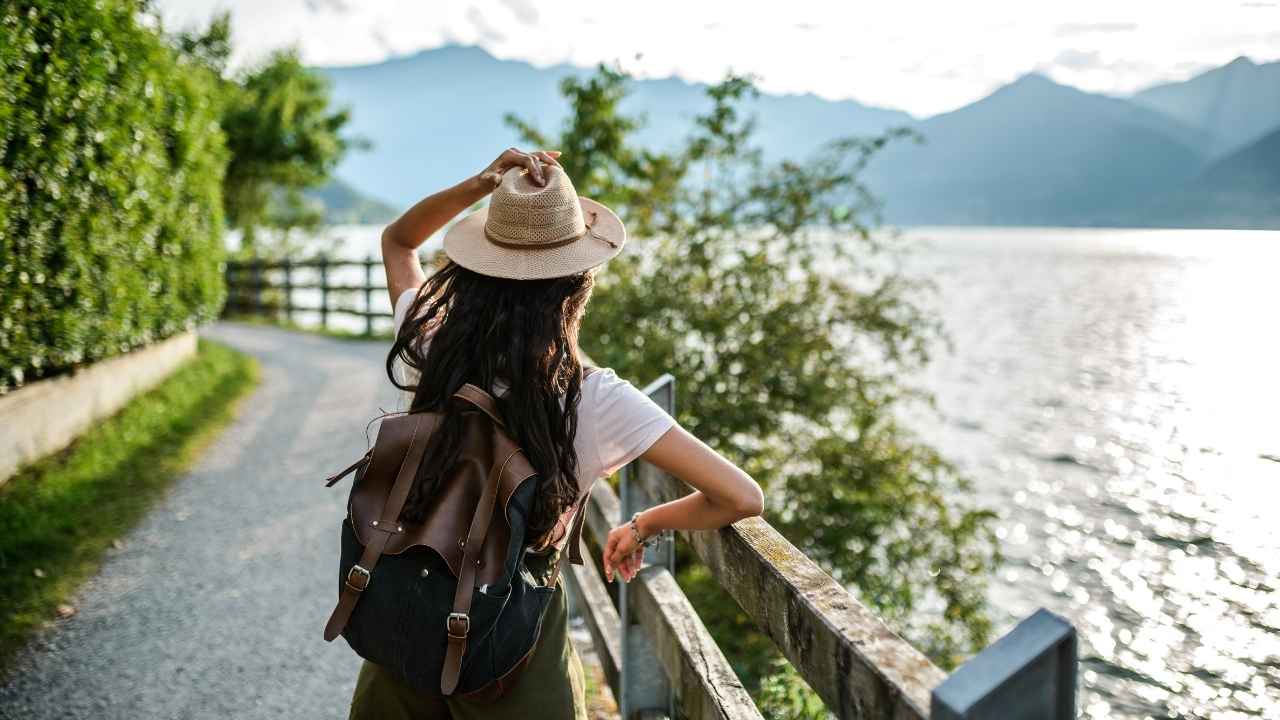




![Gumbadara Viewpoint: Enjoy a Breathtaking Panoramic View of Mountain Valley [& Mt. Kanchanjungha] 17 Read more about the article Gumbadara Viewpoint: Enjoy a Breathtaking Panoramic View of Mountain Valley [& Mt. Kanchanjungha]](https://travelentice.com/wp-content/uploads/2023/06/Gumbadara-Viewpoint-300x169.jpg)
